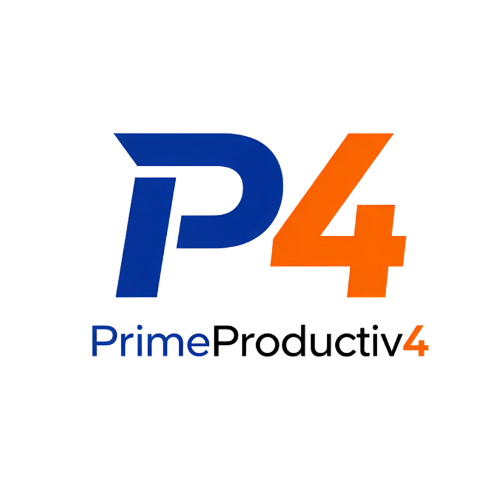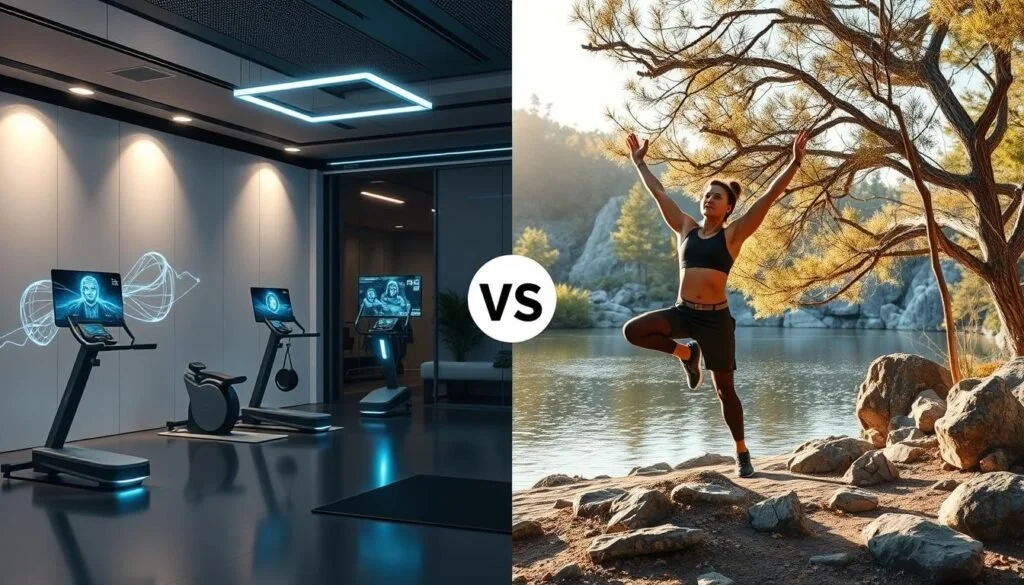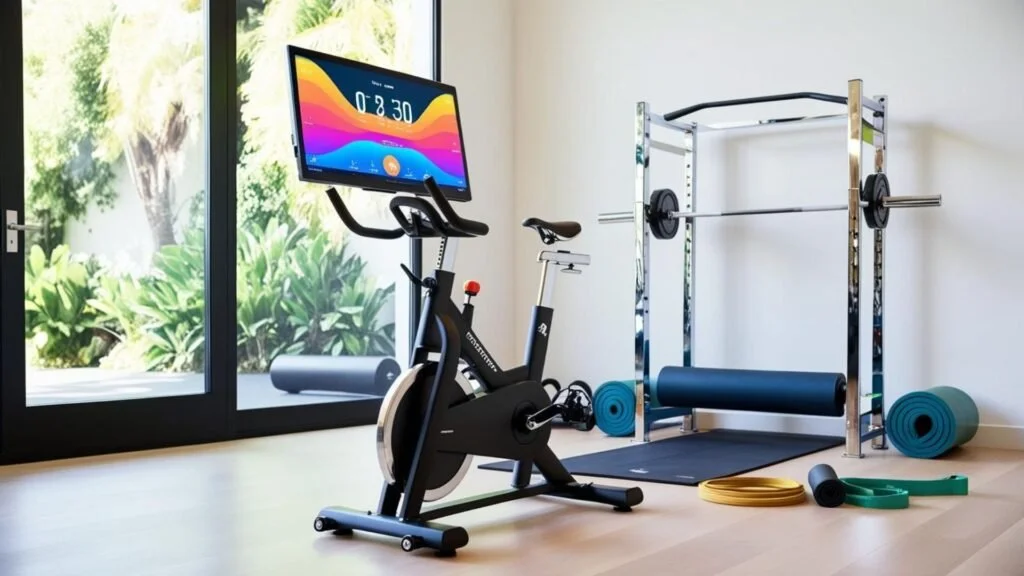Productivity Fitness: How Exercise Tech Boosts Work-From-Home Performance
Productivity Fitness: Finding Your Perfect Work-Performance Balance
In today's fast-paced remote work environment, maintaining peak mental performance can feel like an uphill battle. Did you know that only 23% of remote workers maintain consistent exercise routines, yet those who do report 40% higher productivity levels? This productivity gap has sparked a revolution in fitness technology designed specifically for working professionals.
According to recent workplace wellness studies, remote workers who integrate movement tracking into their daily routines report significantly higher energy levels and improved cognitive function. The global productivity fitness market has surged to $2.8 billion, reflecting a growing understanding that physical wellness directly impacts professional performance.
There are over 50,000 fitness and wellness apps available, but 60% of users abandon them within the first month. This raises important questions about which tools actually enhance work performance versus those that simply add another notification to ignore. Meanwhile, traditional movement practices—walking meetings, desk stretches, and standing breaks—require zero technology and consistently boost afternoon energy levels. For those managing chronic conditions, these gentle approaches often prove more sustainable than high-intensity workouts.
Which approach optimizes your work-from-home productivity?
Let me be clear: this isn't about 'pushing through' or 'no excuses' fitness. When you have MS or chronic illness, exercise is medicine that requires precise dosing. Too little and you lose function. Too much and you trigger a flare that knocks you out for days. Here's the tech that helps find that crucial balance.
The Evolution of Workplace Wellness: From Basics to Smart Integration
For decades, workplace wellness meant basic gym memberships and occasional team-building activities. Ancient civilizations understood the connection between physical movement and mental clarity—Greek philosophers literally walked while thinking, coining the term "peripatetic" learning.
The Rise of Productivity-Focused Fitness Technology
Today's workplace wellness technology goes far beyond step counting. Devices like smartwatches and fitness trackers monitor metrics directly related to work performance—stress levels, sleep quality, and energy patterns. AI-driven apps create movement reminders specifically timed around your work schedule, ensuring physical activity enhances rather than interrupts productivity.
However, research shows that 85% of productivity gains still depend on consistent movement habits, regardless of tracking technology. The key lies in finding tools that support rather than complicate your work routine.
Why This Integration Matters for Remote Workers
Modern productivity tracking reveals gaps that traditional work habits miss. While sophisticated fitness technology provides valuable insights into energy patterns and stress responses, it cannot replace the fundamental discipline of regular movement breaks.
Consider this productivity split:
Traditional Approach: Builds sustainable energy through consistent movement breaks and walking meetings
Tech-Enhanced Approach: Provides real-time feedback on stress levels, optimal break timing, and recovery needs
Productivity fitness combines both approaches—using technology to optimize natural movement patterns for maximum work performance.
The Chronic Illness Exercise Reality
Traditional fitness advice will wreck you. Here's what actually works:
Pacing Over Performance: Heart rate monitoring to prevent overexertion
Recovery Metrics: More important than workout stats
Gentle Movement: Yoga, stretching, walking—not HIIT
Symptom Tracking: Connecting exercise to flare patterns
Energy Budgeting: Exercise costs spoons—plan accordingly
Understanding Tech-Enhanced vs. Traditional Productivity Method
Choosing between technology-assisted and traditional wellness approaches depends on how you prefer to optimize your work energy. Tech-enhanced methods use devices and apps to monitor your physical state and suggest optimal timing for breaks, exercise, and recovery. Traditional approaches rely on consistent habits and body awareness to maintain energy throughout the workday.
Tech vs Traditional Workouts comparison
Performance Optimization Through Data
Wearable devices can track heart rate variability, stress indicators, and energy patterns to identify optimal timing for focused work sessions. For example, they might suggest scheduling demanding tasks during natural energy peaks while recommending movement breaks before concentration dips.
Traditional wellness approaches, however, emphasize listening to your body's natural signals during challenging work periods. This becomes essential when managing symptoms that fluctuate daily.
Habit Formation and Consistency
Fitness apps offer guided routines and progress tracking, but studies show that 45% of remote workers find constant notifications counterproductive. Classic methods require self-discipline but develop lasting habits that don't depend on technology or subscription services.
For example, a remote worker using a smartwatch might schedule walks based on stress level alerts. A traditional approach might involve setting non-negotiable movement breaks every 90 minutes. Both improve productivity, but they develop different types of awareness and dependency.
When you're managing limited energy, consistency matters more than intensity. A 5-minute daily stretch routine you can maintain beats an ambitious workout plan that triggers recovery days.
Remember: Technology amplifies good habits but cannot create discipline. Combining smart tools with consistent practices ensures you maintain productivity momentum whether your devices are charged or not.
The Digital Advantage: Benefits of Productivity-Focused Fitness Tech
Fitness technology transforms workplace wellness from guesswork into data-driven optimization. You can track energy patterns, monitor stress responses, and time movement breaks for maximum productivity impact. Over 78% of remote workers now use some form of wellness tracking, representing a 150% increase since 2020.
This shift enables working smarter about physical wellness rather than assuming all movement equally benefits work performance.
Data-Driven Energy Management
Wearable devices monitor metrics like heart rate variability and stress levels throughout your workday. Productivity coaches use this data to optimize work schedules, identifying peak performance windows and preventing burnout. For example, real-time stress monitoring helps identify when quick movement breaks will have maximum impact on afternoon focus.
Personalized Productivity Protocols
AI-driven wellness apps create routines matching your work schedule and energy patterns. Research reveals 8 key factors influencing productivity tech adoption, including seamless integration with work routines and measurable performance improvements. These tools adapt as your schedule changes, ensuring wellness habits support rather than compete with professional demands.
Work Performance Enhancement Through Movement
Gamification transforms necessary movement breaks into productivity tools. Compete with colleagues in step challenges, or join virtual wellness communities for accountability. These features help 65% of users maintain consistent movement habits that directly boost afternoon energy and focus. The key is choosing movement that energizes rather than exhausts – a crucial distinction for those with fatigue conditions.
Key Benefits:
Real-time stress monitoring optimizes break timing for maximum productivity restoration
AI-powered movement suggestions integrate seamlessly with work calendar schedules
Virtual wellness communities provide accountability without disrupting work focus
Back to Basics: The Power of Low-Tech Productivity Wellness
Returning to fundamental movement practices can significantly enhance your work-from-home performance. Simple activities like desk stretches, walking meetings, and standing breaks improve energy and focus without requiring apps, subscriptions, or device management. This approach builds genuine body awareness that enhances both physical comfort and mental clarity throughout your workday.
Studies demonstrate that consistent, basic movement practices often outperform complex tech solutions for sustained productivity improvements.
The Power of No-Tech Training
Mindfulness and Energy Awareness Benefits
Traditional wellness practices like brief meditation, stretching, or walking help you stay present and energized during long work sessions. Simple activities like gentle stretches or window gazing let you assess your real energy levels and stress responses, improving both posture and decision-making throughout the day.
Cost-Effectiveness and Simplicity
Basic productivity wellness costs nothing compared to subscription services and device purchases. A 5-minute walking break provides the same cognitive reset as expensive wellness apps. Here's the reality:
Movement breaks: Free and immediately effective
Desk stretches: No equipment required
Walking meetings: Zero monthly fees, maximum creativity boost
Flexibility and Location Independence
Traditional wellness practices work anywhere your job takes you. You can stretch at your desk, take walking breaks in any neighborhood, or do breathing exercises in any quiet space. This differs from tech-dependent solutions that require specific apps, devices, or internet connectivity.
Research from workplace wellness studies shows that low-income remote workers maintain higher productivity through simple movement practices like regular walking breaks. No gym memberships or expensive devices required. This matters when medical expenses already strain budgets.
Traditional Methods vs. Tech-Dependent Approaches:
No equipment needed vs. Requires devices/subscriptions
Works anywhere vs. Needs apps/connectivity
Cost: $0 vs. Cost: $100-$300+ annually
Sometimes the most effective productivity solutions are the simplest. Your consistent movement routine could be the key to maintaining energy and focus throughout demanding workdays.
Cost Analysis: Investment vs. Results in Productivity Enhancement
When deciding between tech-enhanced and traditional wellness approaches for work productivity, cost considerations matter significantly. Productivity investment varies widely, but so does the actual impact on your work performance. Tech options like premium fitness trackers or wellness apps require upfront investment plus ongoing subscription fees. Basic fitness trackers cost $100-$250, while comprehensive wellness platforms add $10-$30 monthly.
Tech Costs: Premium devices and apps can total $200-$400 annually. However, free options like basic step counters or movement reminder apps provide substantial value. Paid versions typically offer advanced analytics and personalized coaching.
Traditional Costs: Body-weight exercises and walking breaks cost nothing. However, ergonomic desk accessories or standing desk converters range $50-$200. DIY wellness routines require only time investment.
A professional overview on how Technology changes Sports
Cost-effectiveness depends on how consistently you use these tools to enhance work performance. A comprehensive analysis shows that tech solutions often provide 1.3-1.5x productivity returns when used consistently, meaning benefits typically outweigh costs. However, traditional approaches offer similar benefits without ongoing expenses, relying instead on habit formation and self-awareness.
A hybrid approach often proves most economical: use free apps for basic tracking while focusing on consistent, no-cost movement habits. For instance, combining a simple step counter with regular walking meetings can provide significant productivity benefits while minimizing both costs and complexity.
Consider: Does spending $200 annually on wellness tech actually improve your work performance? Or can a $0 routine of regular movement breaks achieve similar focus and energy improvements? The best productivity investment aligns with your work style and budget, not just the price tag.
Creating Your Optimal Work-Performance Plan: Blending Tech and Traditional Approaches
Blending Tech and Traditional workouts approaches
Building a productivity-focused wellness routine requires combining technological insights with sustainable daily practices. Start by identifying your specific work challenges: Do you struggle with afternoon energy crashes? Have difficulty maintaining focus during long projects? Experience stress during busy periods? Understanding these patterns helps determine the right balance of tech and traditional approaches. Recovery-focused metrics matter more than performance metrics when sustainability is your goal.
Research published in workplace wellness journals found that hybrid wellness approaches improve both cognitive performance and job satisfaction more effectively than single-method strategies.
Here's how to integrate them strategically:
Use apps to identify energy patterns and optimal break timing
Combine wearable data (stress levels, heart rate) with traditional movement practices like desk stretches and walking breaks
Schedule both tech-guided workouts and simple movement breaks throughout your workday
User Type Specific Approaches:
Productivity Focused: Stress-tracking apps + scheduled walking meetings
Energy Management: Heart rate monitoring + strategic movement breaks
Focus Enhancement: Distraction-blocking apps + mindfulness practices without devices
Performance Optimization: Activity tracking + structured desk exercise routines
Hybrid plans work best when they complement your existing work schedule. If you're naturally tech-oriented, use devices to optimize movement timing and intensity. But also incorporate mindfulness practices that don't require gadgets—like brief meditation or breathing exercises between meetings.
Successful integration means technology enhances your natural awareness rather than replacing it. For example, combine app-guided HIIT sessions with intuitive walking breaks for both structured improvement and flexible stress relief.
By blending technological insights with traditional wellness practices, you create a sustainable system that adapts to busy workdays while consistently supporting your professional performance.
Finding Your Balance: Making the Right Choice for Your Work Style
Making the Right Choice for your work style.
Your wellness preferences should align with your professional demands and personal productivity patterns. Work-life integration requires flexibility—some days you'll need structured, tech-guided routines; others call for simple movement breaks without any devices. Understanding how different approaches fit your work personality helps create lasting habits that actually enhance performance.
Workplace research indicates that 82% of remote workers feel overwhelmed by wellness technology, yet personalized fitness routines require choosing tools that support rather than complicate your daily workflow.
Personality-Based Approaches:
Data-driven professionals thrive with detailed analytics tracking work-performance correlations
Intuitive workers prefer mindful movement practices that build natural body awareness
Social learners benefit from virtual wellness communities or walking meeting partnerships
Adapt your approach as your work demands evolve. Beginners often start with simple tracking tools to establish consistent movement habits: 70% find basic step counters help build walking routines. Over time, trust your energy awareness. If constant notifications create stress (75% report feeling overwhelmed by wellness alerts), try unplugging during focused work sessions.
Signs to Add Technology:
Struggling to maintain consistent energy throughout workdays
Difficulty identifying optimal break timing
Wanting measurable progress tracking
Signs to Reduce Technology:
Feeling distracted by constant wellness notifications
Experiencing decision fatigue about which apps to use
Stress from tracking performance data
Your optimal productivity wellness approach evolves with your career. Combine technology for structure and traditional practices for mindfulness. The key? Monthly check-ins—ask yourself, "Does this routine energize my work performance?", and small adjustments, like replacing app-driven workouts with intuitive walking breaks twice weekly, can restore the balance between optimization and overwhelm.
Conclusion: Embracing What Works for Your Professional Performance
Your productivity wellness journey isn't about choosing between technology and traditional approaches—it's about finding the combination that consistently supports your work performance. Workplace wellness research shows professionals are divided between those who thrive with data-driven optimization and those who prefer intuitive movement practices. Both groups demonstrate that sustainable wellness habits significantly impact professional success.
Remember: movement that respects your body's limits is more valuable than pushing through fatigue.
Experiment with different approaches to discover what maintains your energy and focus. Whether it's a guided meditation app or a simple walking break, consistency matters more than complexity. What's most important is developing habits that enhance rather than compete with your work demands.
Your approach will evolve as your career grows and changes. Stay open to trying new tools while maintaining proven practices. Whether it's a structured wellness program with detailed analytics or joining a simple walking group, your path to professional wellness is uniquely yours. Keep exploring until your routine feels supportive, not burdensome.
Looking to optimize your workspace wellness? Check out our guide to 'Home Office Fitness: Essential Equipment for Remote Work Productivity' for tools that support both your physical comfort and professional performance.
Affiliate disclaimer: As an Amazon Associate, I earn from qualifying purchases. I only recommend wellness tools I've personally tested in real work environments.




